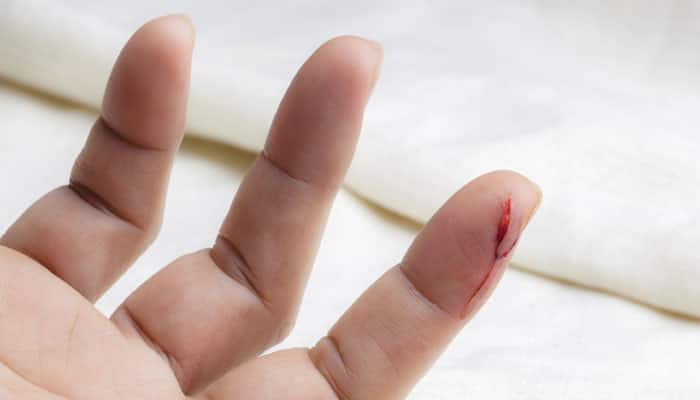New York: Scientists have developed a novel nanoparticle therapy that could speed up healing of all sorts of wounds, including everyday cuts and burns, surgical incisions and chronic skin ulcers.
The experimental therapy, successfully tested in mice, cut in half the time it takes to heal wounds compared to no treatment at all, researchers said.
"We envision that our nanoparticle therapy could be used to speed the healing of all sorts of wounds, including everyday cuts and burns, surgical incisions, and chronic skin ulcers, which are a particular problem in the elderly and people with diabetes," said study co-leader David J Sharp from Albert Einstein College of Medicine of Yeshiva University.
Sharp and his colleagues had earlier discovered that an enzyme called fidgetin-like 2 (FL2) puts the brakes on skin cells as they migrate towards wounds to heal them.
They reasoned that the healing cells could reach their destination faster if their levels of FL2 could be reduced.
So they developed a drug that inactivates the gene that makes FL2 and then put the drug in tiny gel capsules called nanoparticles and applied the nanoparticles to wounds on mice. The treated wounds healed much faster than untreated wounds.
FL2 belongs to the fidgetin family of enzymes, which play varying roles in cellular development and function. To learn more about FL2's role in humans, Sharp suppressed FL2's activity in human cells in tissue culture.
When those cells were placed on a standard wound assay (for measuring properties like cell migration and proliferation), they moved unusually fast.
"This suggested that if we could find a way to target FL2 in humans, we might have a new way to promote wound healing," said Sharp.
Sharp and project co-leader Joshua Nosanchuk, professor of medicine at Einstein, developed the wound-healing therapy that uses molecules of silencing RNA (siRNAs) specific for FL2.
The siRNAs act to silence genes. They do so by binding to a gene's messenger RNA (mRNA), preventing the mRNA from being translated into proteins (in this case, the enzyme FL2).
To find a way to deliver siRNAs for curbing FL2, the nanoparticles with their siRNA cargoes were tested by topically applying them to mice with either skin excisions or burns. In both cases, the wounds closed more than twice as fast as in untreated controls.
"Not only did the cells move into the wounds faster, but they knew what to do when they got there. We saw normal, well-orchestrated regeneration of tissue, including hair follicles and the skin's supportive collagen network," Sharp added.
The research was published in the Journal of Investigative Dermatology.
















